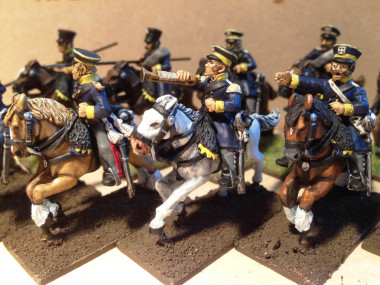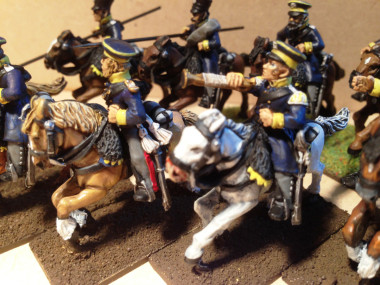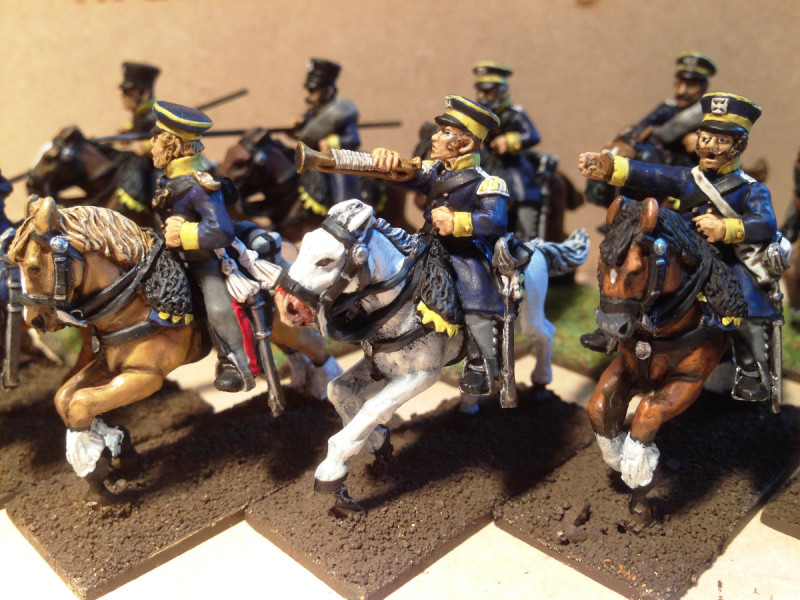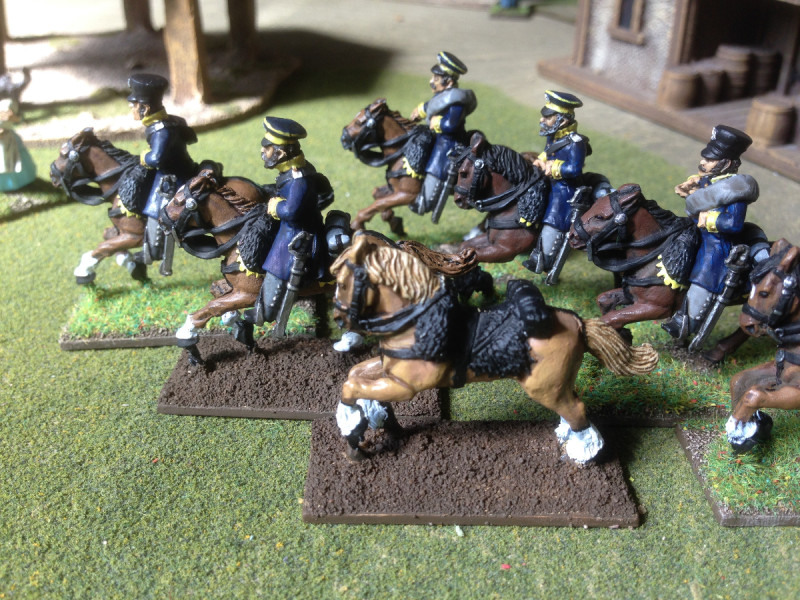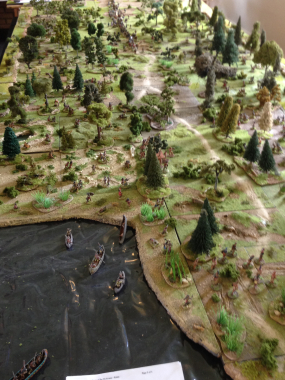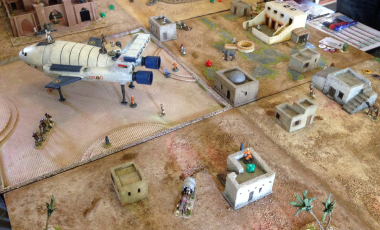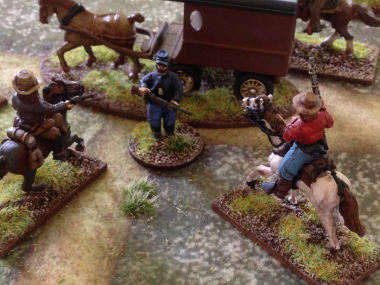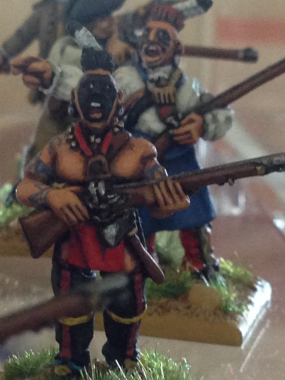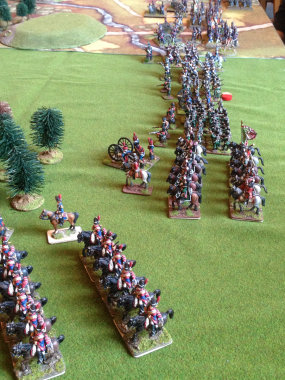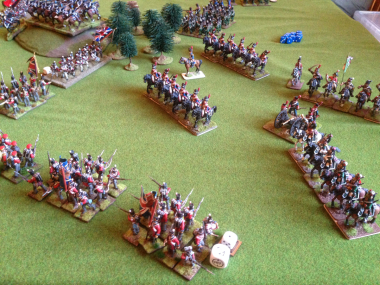
Prussian Landwehr Cavalry – Work in Progress
I guess that you can make painting horses as easy or as difficult as you like, from just a brown coat to the more complex spotted greys. I have tried quite a few of the different techniques over the years but I’ve been trying to improve my results to make the horses look a bit more interesting without spending too long on each horse. It’s also been a good way of practicing highlighting and shading, without relying on Quickshade or Inks.
There are two techniques that I’ve been trying with this latest batch of horses. Both are very similar and both are based on using the three colour; shade, main coat , highlight technique that the professionals, such as Kevin Dallimore use to such good effect. Lets be clear, I’m a long way from that standard and I’m still set on producing regiments for wargaming rather than high quality figures for photography. However, practice makes perfect, as they say, and learning a particular style will help me speed up my painting process.
If any one is interested in seeing a master class in how to paint horses using this method, then I recommend this youtube video by Toby of Art Master studios – it’s an hour and a half of watching paint dry but still better than 90% of the stuff on TV these days! There are some great ideas here and I’ll just summarise them, as much for my own reference, although I hope that it will be useful for other wargamers.
First choose your colour pallet for your horse – using three colours will allow you to get variation on horses, even when using the same colours on a batch of horses. Here’s a few of my favourite recipes using Vallejo paints! All of them are used over a black undercoat.
For Browns: German Cam. Black Brown,70892, Flat Brown,70894, Orange brown 70891 or Mahogany Brown 70846. Be careful with the mahaogany brown, it is quite red and adding white to it will make your horse look pink so if you want to lighten it, use a Light brown, 70929. Another useful combination is Chocolate Brown 70872, Flat Brown,70984, Cork Brown 70843.
For a light brown or cream horse, try Flat earth 70983. Cork Brown 843 and Green Ochre 70914. Or try gold brown, 70877 as the mid colour.
For black horses, use Black 70950, Black Grey, 70862, and highlight sparingly with light grey,70990.
For Grey horses, Dark grey 70984, Neutral Grey 70992, Light grey 70990.
And for White horses ( still Grey really!) Light Grey 70990, Sliver grey, 70883 and Off White 70820.
So that’s the horses body done. I stress that these are just some of my paint combo’s that I have tried. There are plenty more out there but using three colours in combination will give you plenty of variety. I mentioned that I was trying two techniques when painting. The first one is to carefully paint one colour over the other building up the highlights by picking out the muscles on the horse. This is the most time consuming and if done well gives superb results. The other method is to use a dry brush technique with the the colours. This is much faster and the results are still pretty good but you will need to go back over the harnesses etc as the paint will cover them if this method is used.

Prussian Landwehr Lancer on Brown horse
Next up, is the detail on the horses. The obvious ones are the mane & tail. You can either paint these in the same colour as the body of the horse or use black or green ochre to give variation. On the Cream horses, Biege 70917 looks good and on the greys, either a dark grey or white mane & tail looks fine. As these areas tend to have more texture, using an ink and then dry brushing with a light shade or even white will really bring the detail out.
The next area to look at are the legs – painting white or black ‘socks’ on one, two, three or four legs is fine and will give variation in your regiment. Finish off the legs with the hooves. I paint them either black or a dark brown, it just tidies them up. You can also paint the horse shoes in steel if they are showing but it’s something that I tend to leave as a detail too far – besides , my thought is that they will be covered in mud…..
The last thing that I paint is the head. Again, a bit of variation here can make all the difference. I usually paint a white ‘blaze’ on the horses head. You can leave the muzzle the same colour as the horse or paint it black, dark grey or even a dark flesh colour. The eyes are painted black, although I will sometime use gloss black for this to get a shine.
The final bit is to paint the horse furniture and that is dependant on your Regiment and an article for another time. I have mentioned variation in horse quite a bit. Some of the elite cavalry regiments would of course ensure that the opposite was true. For example, the Household cavalry would be mounted on all black horses but I think that other regiments were less fussy and of course when on campaign or in battle, so long as the horse had four legs, it would do!

Work in progress – light brown horse
The pictures in the article show my latest regiment, Prussian Landwehr Lancers. As you can see they are yet to be finished, with some based with riders & some still not quite painted fully and none of them with their lances yet! I tend to paint horses in batches of three using one colour combo and then finish with the command group. As the trumpeter usually rode a grey and the officer would have had his own ‘posher’ horse, I leave these until last of all. Once they are all painted, I’ll go back over them all adding a few last quick highlights, correcting any obvious paint errors and of course detailing the bases with a few tufts and flowers.
So that’s my take on painting horses – Cheers!
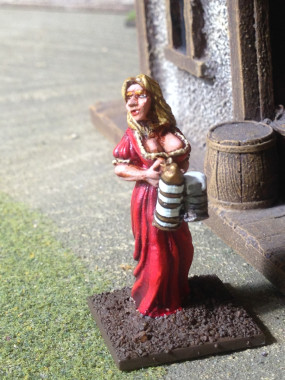
The latest resident in Little Bingham – just the basing to finish!

